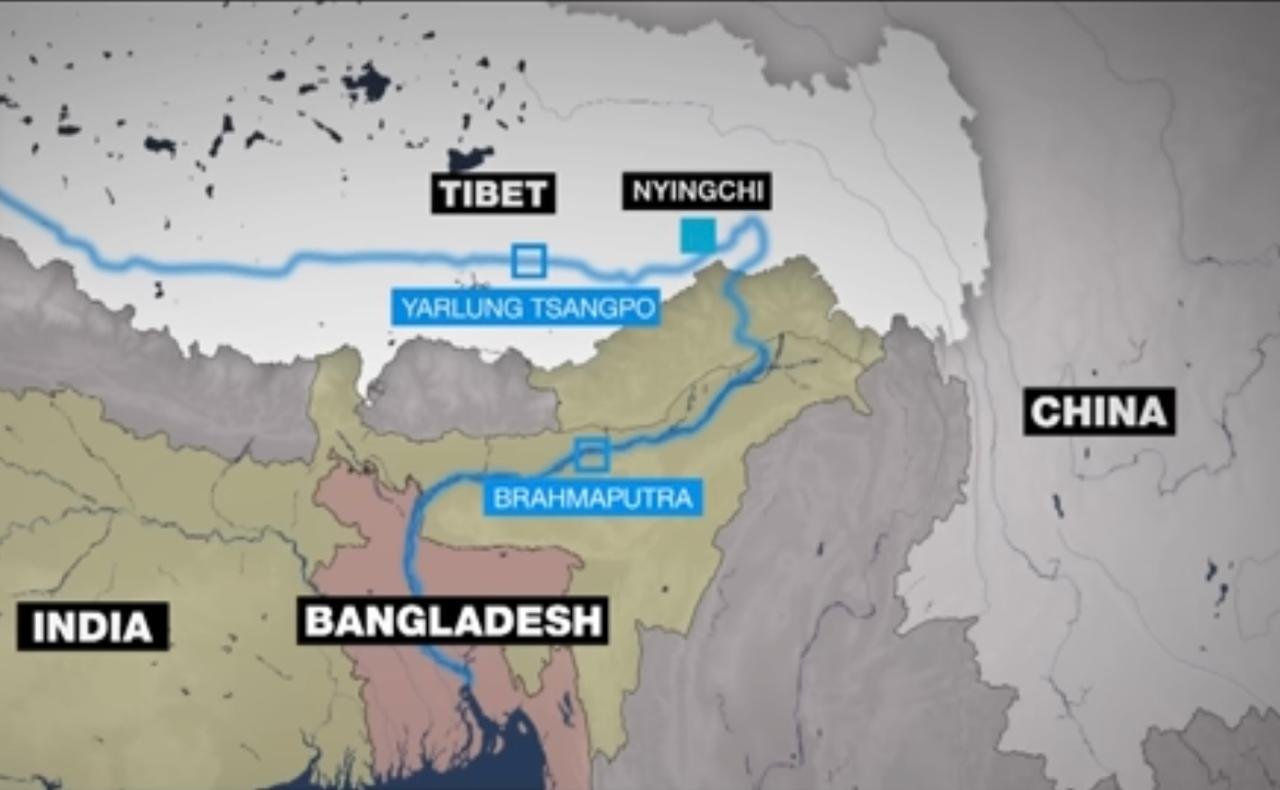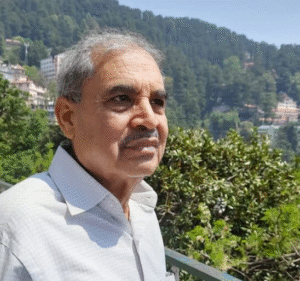Greater Noida(Hridaya Mohan): High Talks, Higher Dams Just days after External Affairs Minister Dr. S. Jaishankar’s high-level visit to Beijing rekindled cautious optimism about India–China relations, another development—this time far from the cold heights of Pangong—has raised new alarms. The Chinese government has formally broken the ground on a colossal $167.8 billion hydropower dam on the Yarlung Tsangpo River, known as the Brahmaputra in India, near the Great Bend before it enters Arunachal Pradesh. This underscores China’s strategy of shaping power through infrastructure — not just on contested borders, but across Transboundary Rivers.
Unlike the stealthy infrastructure buildup exposed through satellite imagery at Pangong Lake, this development has been announced publicly. On July 19, 2025, Chinese Premier Li Keqiang himself presided over the inauguration— leaving no ambiguity about intent, timeline or ambition. Yet the implications for India’s national security and regional water stability are no less serious. In fact, they might be broader.
An Open Display of Hydrological Muscle
The dam, planned in Medog County in the Tibet Autonomous Region, is part of China’s 14th Five-Year Plan and is expected to be among the world’s largest — even surpassing the Three Gorges Dam in capacity. Designed to generate over 60 gigawatts of electricity, it marks a major step in Beijing’s strategy to harness the enormous hydropower potential of the Tibetan plateau.
While Chinese officials describe the project as a clean energy milestone, it also sits squarely within a strategic geography. The Great Bend is just upstream of Arunachal Pradesh — a region China continues to claim as “South Tibet.” By building such a massive dam at a location so close to the disputed boundary, Beijing sends a clear message: it intends to control not just contested land, but the flow of water across it.
Linking Diplomacy and Development
This move stands in stark contrast to the diplomatic tone struck during Dr. Jaishankar’s visit. China spoke of mutual sensitivity and improved ties; Indian officials cautiously echoed the sentiment, calling the talks “constructive” and “forward-looking.”
But as India learned at Pangong Tso — where bridges and permanent settlements appeared even amid military talks — China’s words often mask deeper realities. The new Brahmaputra dam is not a covert act. It is a loud, deliberate and legally unchallenged assertion of upstream dominance.
In both cases — Pangong and the Brahmaputra — China is redrawing realities through construction. The only difference is in visibility, not in intent.

Why the Brahmaputra Matters?
India’s concerns are twofold:
- Water Security: The Brahmaputra is critical to the livelihoods of millions in Assam and the Northeast. While China insists the dam will not divert water, India lacks real-time access to flow data or a binding water-sharing treaty. Beijing’s past record of suspending hydrological data during border standoffs does little to inspire trust.
- Geopolitical Leverage: The Brahmaputra is a lifeline for India’s Northeast and Bangladesh, sustaining agriculture, fisheries and millions of livelihoods. By physically controlling the flow of a major transboundary river, China gains strategic leverage. If tensions escalate, water could become a bargaining chip—especially in lean seasons or during floods.
Unlike Pakistan – with whom India has the Indus Waters Treaty – or Bangladesh – Ganga Water Treaty, –India has no formal hydrological pact with China, despite sharing multiple rivers. This asymmetry now looms larger.
Strategic Implications: A Familiar Playbook
As highlighted in the recent analysis of Pangong, published on July 25, 2025, – “Diplomacy vs Deployment,” – China excels at executing long-term infrastructure projects that alter ground realities while maintaining diplomatic postures of calm.
This same playbook is now at work on water:
- In Ladakh, dual-use settlements and bridges improve PLA logistics.
- In Tibet, a Mega-dam offers Beijing control over water flow, data and narrative.
The difference? While Pangong infrastructure was hidden until exposed by OSINT, the Brahmaputra project is open — a fact China is proud to showcase.
What Should India Do?
- Demand Transparency, Not Just Data: Hydrological cooperation should move beyond seasonal data exchange. India must push for an institutionalized, binding framework for river-sharing, especially for Brahmaputra and Sutlej-origin rivers.
- Enhance Monitoring: Even public projects require strategic observation. India should invest in space-based flow monitoring, glacier melt analysis and regional early warning systems.
- Build Regional Consensus: Downstream nations like Bangladesh will also be impacted. India must work with them — bilaterally and via multilateral forums — to push for responsible river governance.
- Counter-Infrastructure: India must expedite its own hydropower and storage projects in Arunachal Pradesh and the Northeast. Counter-capacity is both a deterrent and a necessity.
- Use International Forums: In G20, BRICS, QUAD and SCO meetings, India can highlight the growing mismatch between China’s environmental commitments and its unilateral upstream actions.
Water is the New High Ground
China’s dam on the Brahmaputra is not just about electricity — it’s about establishing primacy over a shared resource. Like the bridges across Pangong, it changes the facts on the ground – or in this case, in the water – before negotiations even begin.
In the Himalayas, whether it is terrain or river flow, China builds first and talks later. India cannot afford to treat this dam as just another engineering feat. It is a geopolitical act — performed in daylight, framed in steel and concrete.
And if the lesson from Pangong is any guide, India must prepare — not just to negotiate, but to anticipate, deter and adapt. Geography may be nature’s gift, but power lies with those who reshape it.
About The Author

Mr. Hridaya Mohan (hridayamohan@yahoo.co.in) is a regular Columnist with a renowned Indian daily “The Hitavada”, “Bharat Neeti Media” and some other newspapers / magazines internationally. He lived and worked in Beijing for 6 long years as Chief Representative (China & Mongolia), SAIL. Recipient of “Sir M Visvesvaraya Gold Medal”for one of his papers, “Benchmarking of Maintenance Practices in Steel Industry” from The Institution of Engineers (India), he was awarded with “Scroll of Honour” for the excellent contributions to Engineering fraternity from IE(I), Bhilai, “Jawahar Award” for leadership excellence in SAIL and “Supply Chain Leader – 2017” award from IIMM. The writer lived and worked in Beijing for 6 long years as Chief Representative (China & Mongolia), SAIL.








